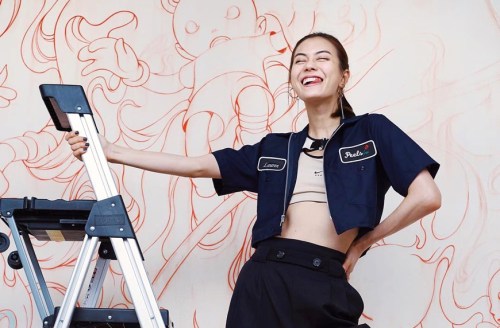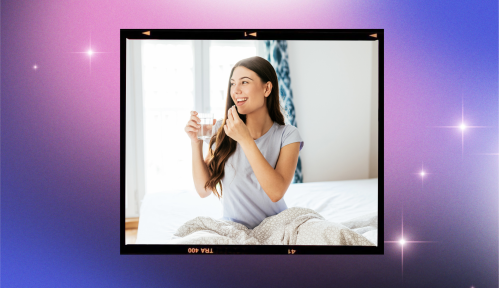The resurgence of workwear is giving rise to a whole new generation of Rosie the Riveters
Brands traditionally associated with laborious industries are making their way into street style staples and infiltrating high fashion.

A few fashion cycles ago, the internet almost combusted over a $200 cotton DHL T-shirt from the French design collective Vetements. People split in to camps—was it superfluous and excessive or a genius deconstruction of what it means to be designer? The jury, even all these years later, is still out. The episode was a watershed moment, however, that helped bring workwear to the forefront of ready-to-wear fashion.
To be clear, you don’t need to spend hundreds of dollars to add some utility to your wardrobe. Quite the opposite actually. For example, this Carhartt Surrey Rain Coat only costs $70, while this G&F version is only $12. And it’s precisely that intersection between affordability and utility that lends workwear its mass appeal. In it, conscientious consumers, who are increasingly interested in reliable, long-lasting, yet affordable investment pieces, have found an antidote to fast fashion and the notion that affordable finds are rarely made to last.
In quick order, traditional workwear brands like Carhartt, Dickie’s, Ben Davis, Dr. Martens, and Wrangler have become street-style staples readily available at retailers like Asos, Urban Outfitters, Odin, and Target. Then there’s Carhartt’s Work In Progress (WIP) stores. Currently, there are 80-plus locations worldwide, including Paris, New York City, Tokyo, and London, and each caters to a clientele that’s decidedly more high fashion than Home Depot—even though their inventory is essentially elevated versions of its traditional pieces like overalls and canvas jackets for men and women.
Beyond these workwear brands being co-opted by the masses, high fashion has also begun to use both utilitarian prints and styles as inspiration. Millennial loved beauty brand Glossier outfits its showroom employees in pale pink boilersuits, Calvin Klein sent out firefighter-esque models on the runway for FW18, Reebok recently collaborated with Utility Pro Wear, which is known for creating protective outerwear for park rangers and firefighters, and designers as fringe and fashion-forward as Junya Watanabe are recreating the aesthetic in their image.
To incorporate workwear into your everyday look, Caryn Hsu, founder of the utilitarian label Hemsmith, says, “I recommend investing in classic silhouettes that outlive seasonal short-term trends.” So, go for the investment piece and not the fast-fashion version. (Your brain will thank you.) Hsu suggests starting with a quality pair of coveralls, for example, which will allow you to embrace the workwear aesthetic at different levels of intensity. You can wear it fully buttoned up, or you can wear it open with another top (say a buffalo plaid shirt or band tee) peeking out. Hsu says that workwear is about “striving to create purposeful, adaptable, and meticulously tailored pieces, regardless of your sex.”
In other words, workwear falls into the gender-neutral fashion category, with blue-collar work shirts, like the customizable ones from Peels, being among the most in-demand items to own from a new brand. Initially, Jerome Peel created his tops as a uniform for his father’s house painting company but they’re now a common sighting on celebrities and in New York City’s downtown scene. (Peel started his brand in Chinatown.) When I ask him why so many people seem to be obsessed with mechanic shirts and boilersuits at the moment, he doesn’t hesitate. “Workwear is always fitted so nicely,” he says. “The clothes were made to help the worker perform at their best.” Think the iconic WWII advertisements featuring Rosie the Riveter. Now that’s a woman who knew how to get things done.
The fashion landscape is changing as the industry re-embraces the Western aesthetic and invests heavily in streetwear brands.
Sign up for the Well+Good SHOP Newsletter
Get exclusive deals on wellness, beauty, fitness, and food products that have been hand-picked by our editors.
Got it, you've been added to our email list.







